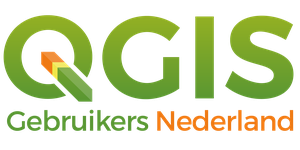

GWAT - Watershed Analysis Toolbox by Geomeletitiki
Semi-automated Hydrological Basin Analysis toolbox.
<b>Version 3:</b> This is the new version of the <a href="https://plugins.qgis.org/plugins/geomelwatershed-master/">Geomeletitiki Watershed Analysis Toolbox</a>, which uses the SAGA Next Gen provider. Please note the original plugin is now considered DEPRECATED.
In order to use this version, you must first setup the SAGA processing provider, using <a href="https://plugins.qgis.org/plugins/processing_saga_nextgen/">Processing Saga NextGen Provider </a>. Instructions are readily available online.
<br/>A specialized <b>watershed basin analysis</b> toolbox designed according to the methodology demanded by <b>Greek</b> legislative standards for Hydrological engineering studies. The plugin is divided into 4 main modules, which should be executed in the respective order
<h2>Module1</h2>
comes first, and is executed for the whole area/DEM. The user must provide a DEM and specify the Channel Initiation Threshold. The module produces the following outputs:
-<b>Flow Directions</b> raster
-<b>Filled DEM</b> raster (according to Wang&Liu's method)
-<b>Channel Network</b> raster
-<b>Channel Network</b> vector
<h2>Module2</h2>
handles basin/sub-basin level analysis. It ingests the Filled DEM and a Control Point (Pour Point)
Outputs:
-The <b>watershed</b> that drains through the Discharge Point (pour point) as a vector polygon (Watershed Basin)
-<b>Curve Numbers</b> of the soil, as vector polygons -->CN Labels
-<b>SCS Soil Class</b> Cover of the basin -->SCS Cover
-<b>Corine Class Cover</b> of the basin -->Corine Cover
-<b>Contour Lines</b> (at a user-specified interval) -->Clipped Contour Lines
-<b>Channel Network</b>, cropped to the watershed of the basin --> Clipped Channel Network
<h2>Module3</h2>
calculates the Longest Flow Path (longest stream) in a basin.
Outputs:
-<b>Longest Flow Path</b>as a Vector Polyline
-Its <b>Length</b> (in meters) and the <b>Elongation Ratio</b> of the basin, both as attributes of the above layer.
<h2>Module4</h2>
calculates the parameters needed to produce ICN Curves. It utilizes a dataset of greek meteo stations with their respective parameters.
Outputs:
-<b>Nearest Stations</b>as Vector Points. Each feature includes the station's parameters (κ, λ, ψ, θ, η) as well as its calculated hydrological parameters used for ICN curves extraction.
The stations' distances from the watershed's centroid are calculated and used to apply Inverse Distance Gage Weighting for the calculation of each station's parameters contribution to the ICN cuves result.
Through the use of this plugin, most of the analysis process is automated, with user intervention practically needed only to initialize Modules 1, 2 and 3. Land use data are derived from Copernicus' CORINE2018 dataset, and soil properties are extracted from the Soil Map of Greece.
<h3>Credits</h3>
Conception & process design by <a href="https://gr.linkedin.com/in/ioannis-georgakis-b730526a?trk=people-guest_people_search-card">Ioannis Georgakis</a>, Hydraulic Engineer MSc,
Testing, QA and debuging by <a href="https://www.linkedin.com/in/eleftheria-koutsimari-4762b81b1/"> Eleftheria Koutsimari</a>, MSc Water Resources
Implementation by <a href="https://gr.linkedin.com/in/efstathios-lymperis-975702188">Efstathios Lymperis</a>, Geologist & GIS Developer.
The plugin was originally developed at the Hydrology & Hydraulics dept. of <a href="https://www.geomeletitiki.gr/">Geomeletitiki Consulting Engineers</a>, and is currently independently maintained.




























